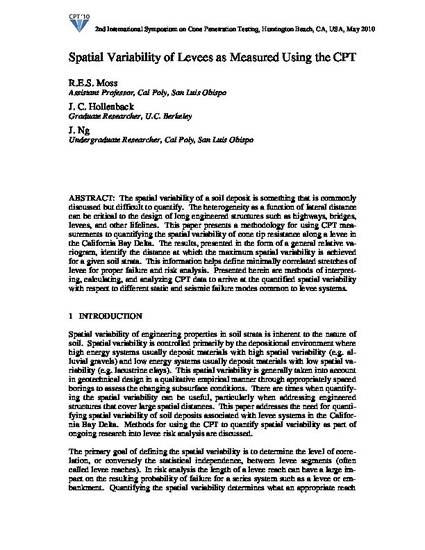
The spatial variability of a soil deposit is something that is commonly discussed but difficult to quantify. The heterogeneity as a function of lateral distance can be critical to the design of long engineered structures such as highways, bridges, levees, and other lifelines. This paper presents a methodology for using CPT measurements to quantifying the spatial variability of cone tip resistance along a levee in the California Bay Delta. The results, presented in the form of a general relative variogram, identify the distance at which the maximum spatial variability is achieved for a given soil strata. This information helps define minimally correlated stretches of levee for proper failure and risk analysis. Presented herein are methods of interpreting, calculating, and analyzing CPT data to arrive at the quantified spatial variability with respect to different static and seismic failure modes common to levee systems.
Available at: http://works.bepress.com/rmoss/29/
